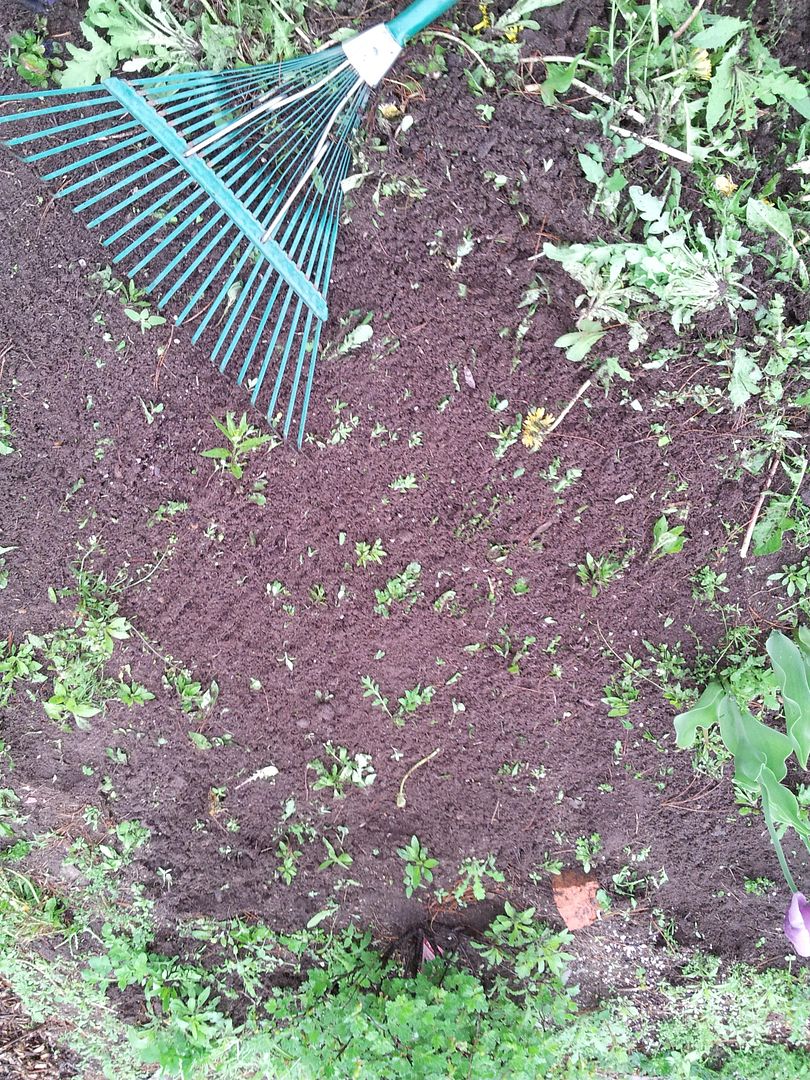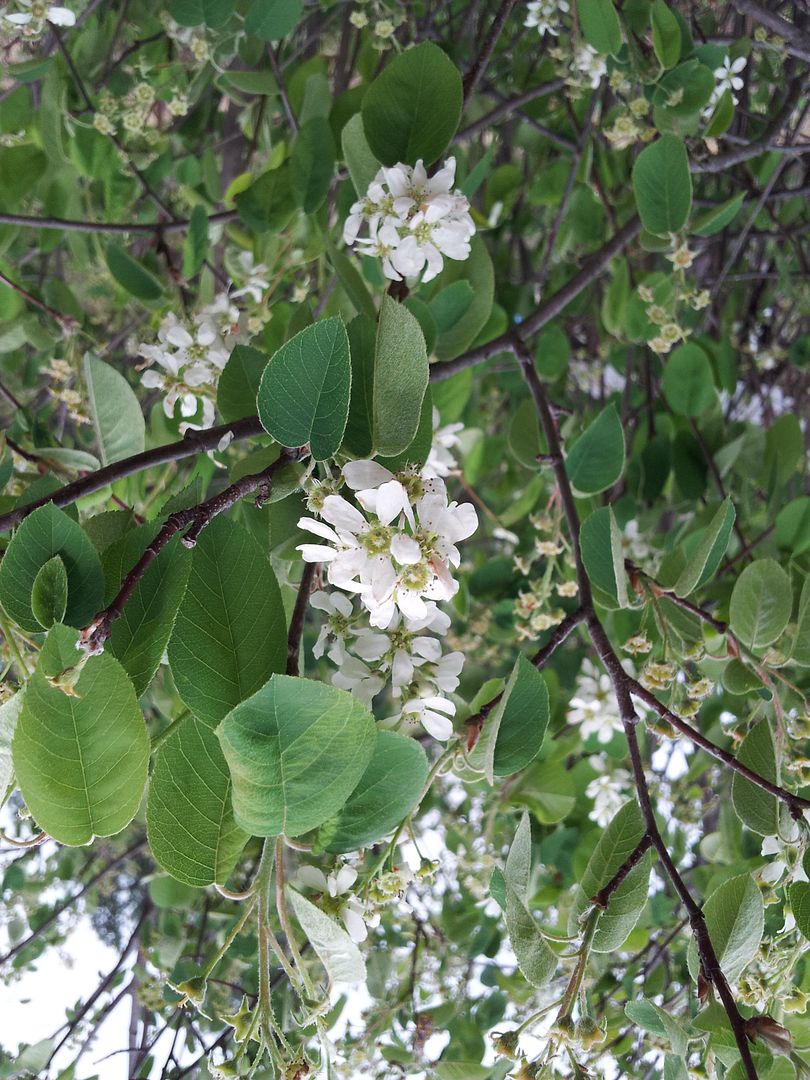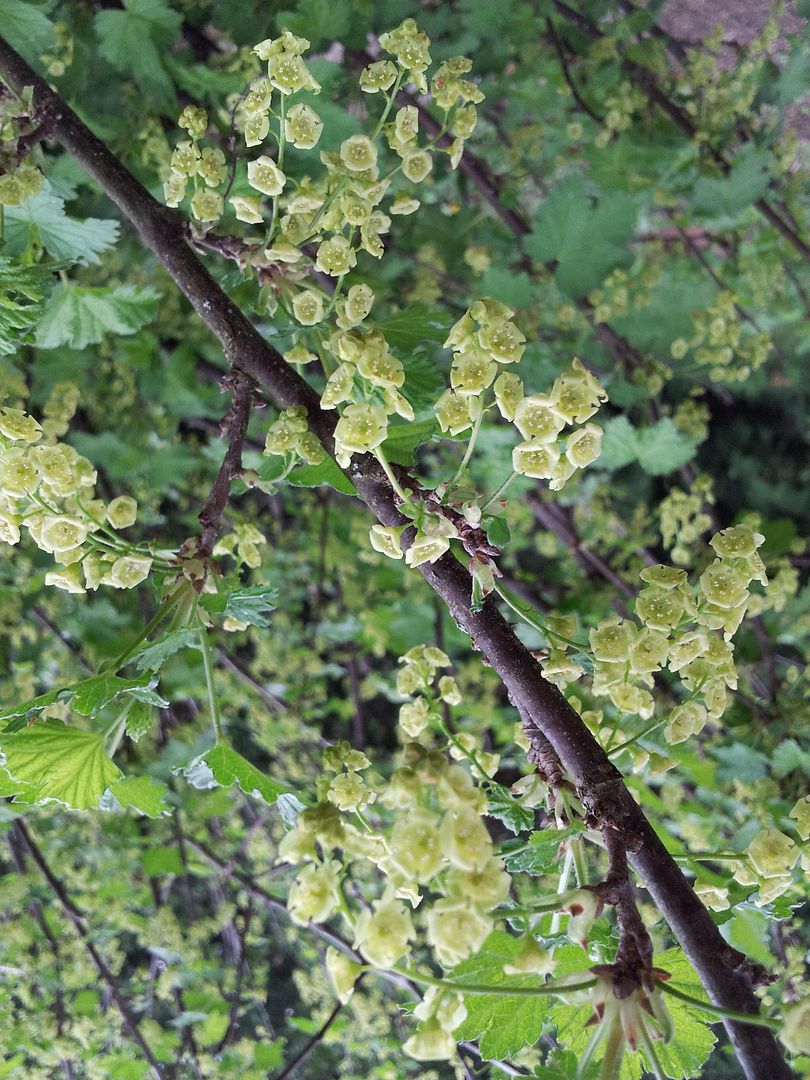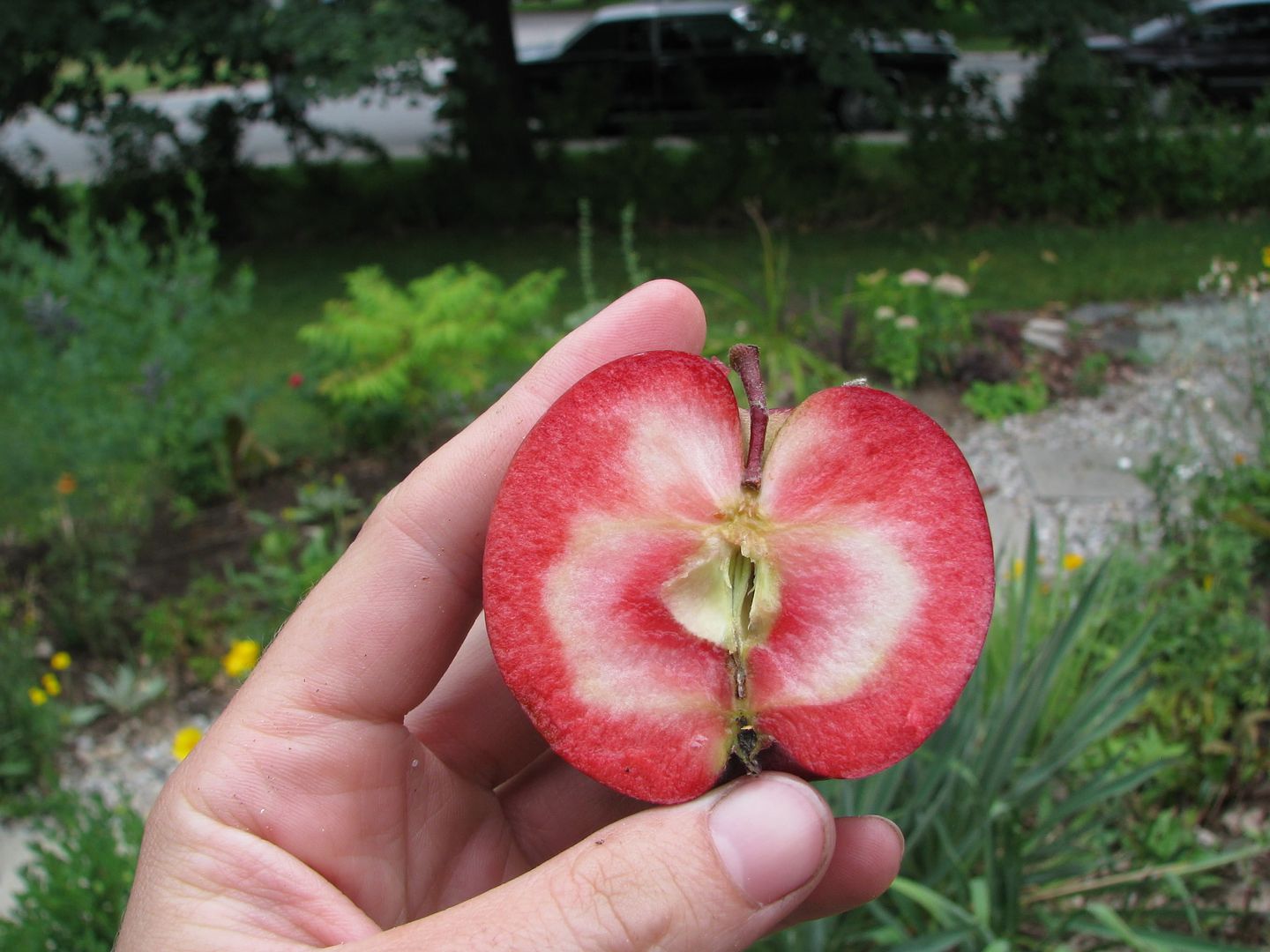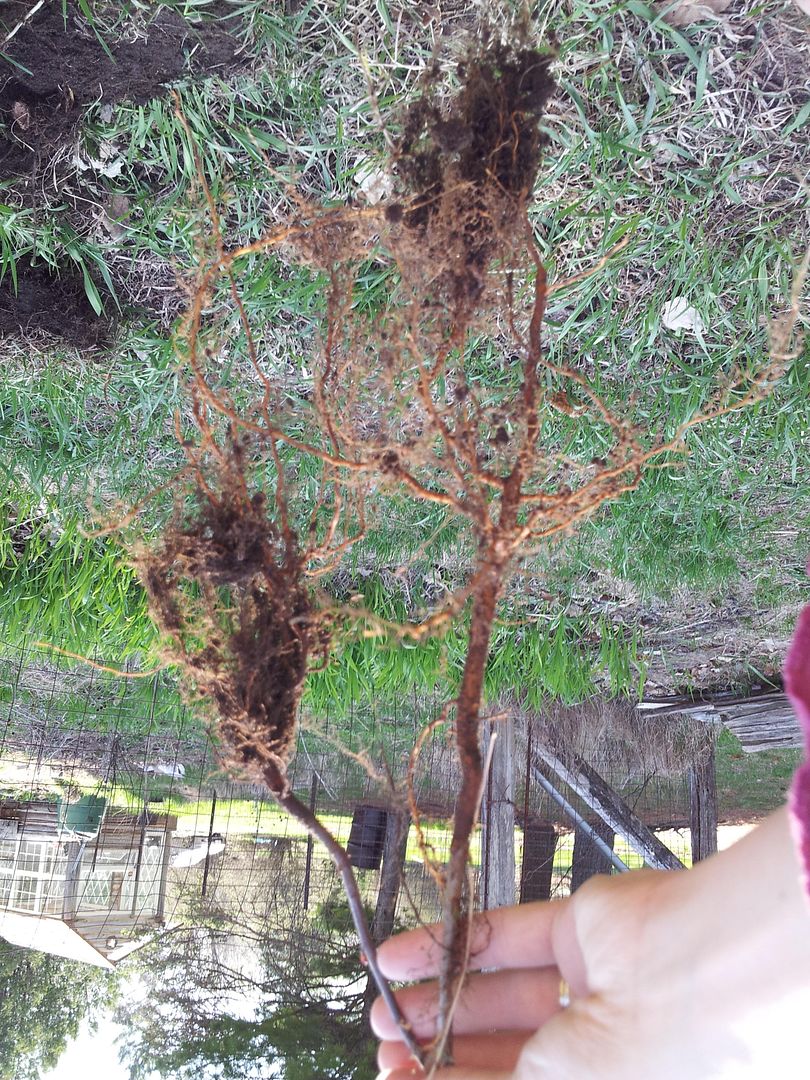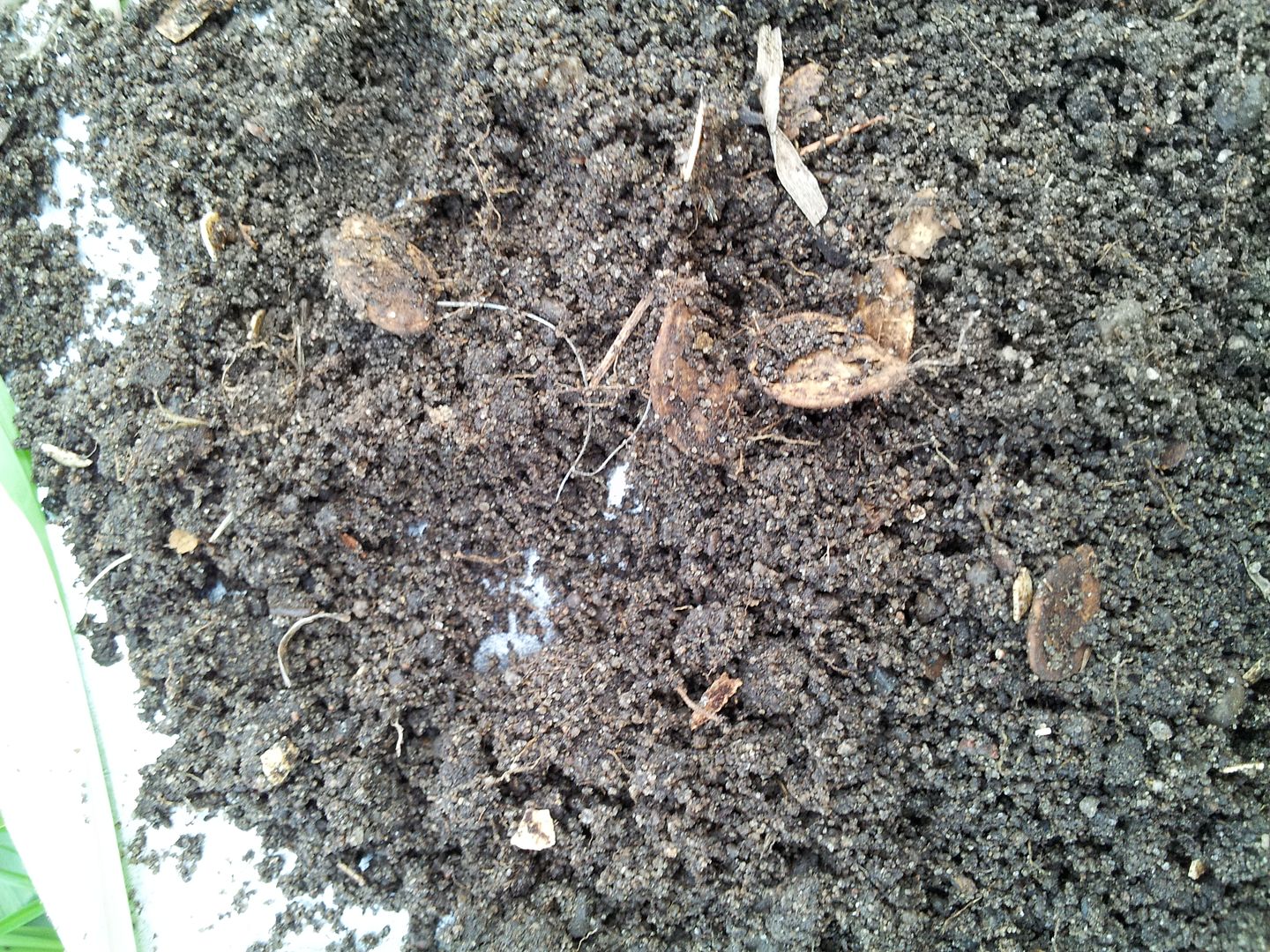Dandelion Demo Bed Before:
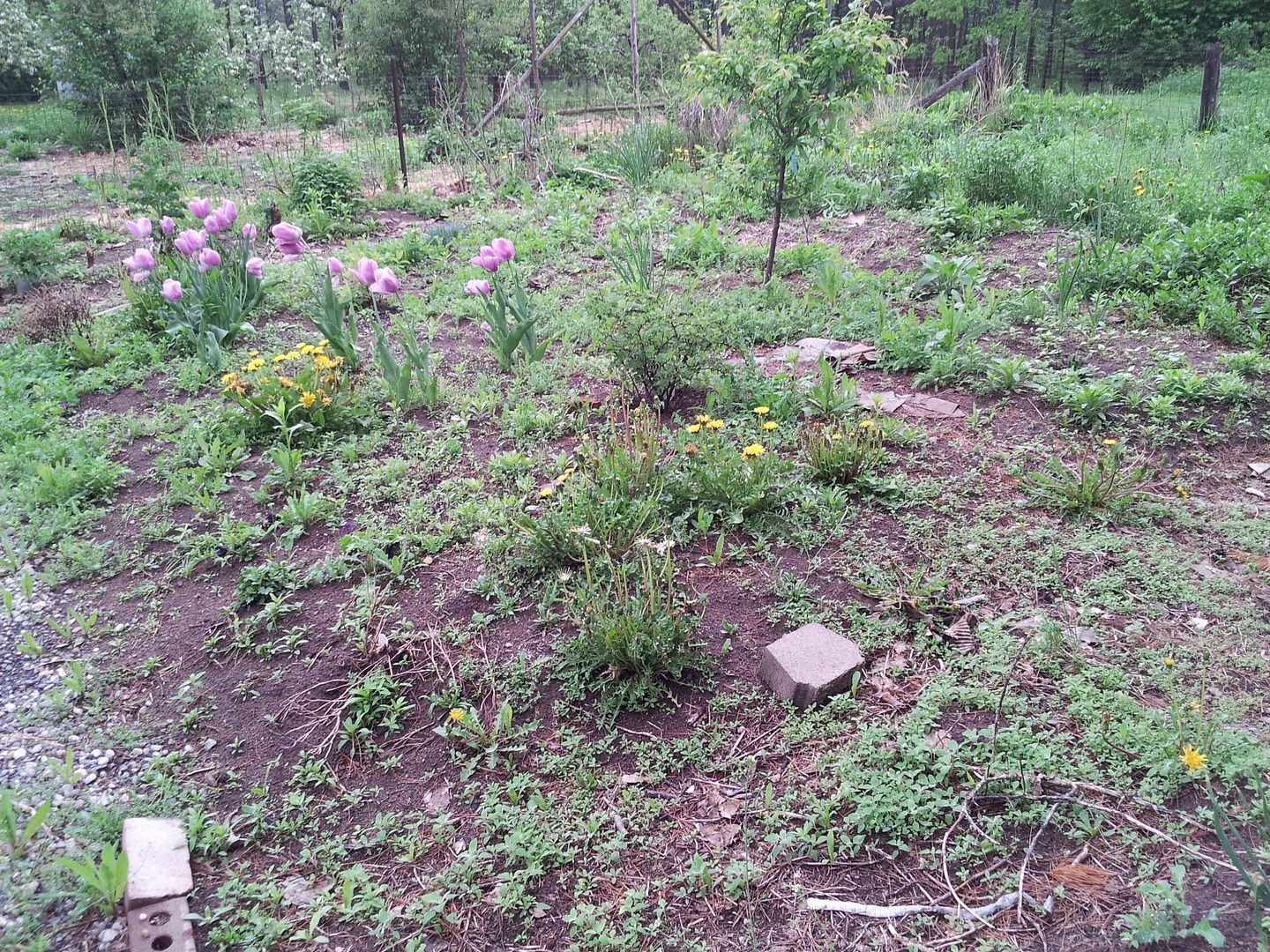
Here is a before shot of the dandelion demonstration garden*. Honest there are dandelions in there. No not the Taraxacum officinale that is so boldly blooming. Other ones too. P.S. I was unable to garden as much as I wanted to last summer due to paranoia about touching soil while pregnant.
All that's changed now!
I live on a large acreage with huge gardens, some of which I have started from scratch and others I inherited along with their problems. I am also trying to limit inputs to avoid importing pests, diseases, weeds and chemicals.
Loosening soil with shovel - quick and dirty:
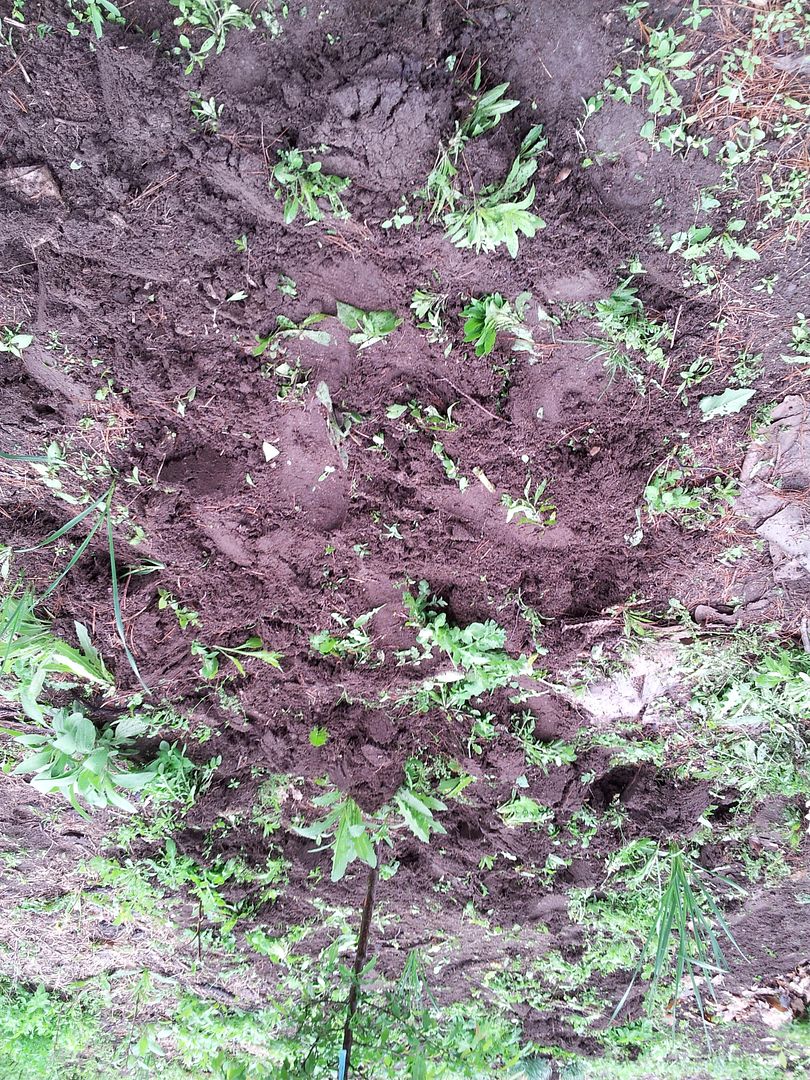
Most of the weeds in here are annuals including a very prolific flanders poppy which I prefer in more moderation than it likes to grow. I removed the perennials with my trusty shovel then quickly went around loosening the dirt beneath the rest. It had recently rained so the soil was easy to work.
Weeding has become a whole new experience for me. I've learned to love both my little hoe and my large digging hand-plough like hoe. I've also been experimenting with growing mulch in situ and putting in gardens using a method I am calling 'rough beds' though it is more commonly known as the bastard bed. Speed is of the essence though when I can take the time to get down to ground level and hand weed, I remember the meditative and exploratory beauty of weeding. Yes really.
Raking away weeds - imperfect but pretty darn good:
Then I raked up the weeds. Okay so not all the weeds release their grip on the ground but most of them do at this stage. I then went in with my baby hoe and scratched up the rest leaving them there to dry up (poor things).
All this to say that I have been extremely busy putting in and maintaining gardens for our families needs and for my slowly developing business but instead of ignore this blog, this is the first in a series on weeding.
Dandelion Demo Bed After:

Then I re-mulched the paths as they had been in disarray from the chickens that attacked the earwig invasion last year (thank you chickens). Now you can see that there are two garden beds here. The front one is planted with some unusual dandelion varieties, some violas, rock cress and a few other things and the back garden has a small plum, zucchinis and more. P.S. Please don't look beyond because oh yes there is more to be done. Oh so, so, so, so much more.
***
Stats
Size of garden beds: two beds 3x9 feet more or less with a 1foot wide utility path
Tools: shovel, rake, wheel barrow
Level of weediness: 3 out of 5, lots of annual weeds but still small**
Time: Approx. 1hour and most of that in hauling mulch.
Number of Gardens to go: Well, considering this is one half of one garden out of around 12, there is more though I have done some work no them already.
Next Time: Getting to Know You: a primer on weedy ways
*No I'm not being sarcastic. There are some cool plants in there!
** Though one thing I have noticed is that weeds have a way of thinning themselves out. If you ignore baby weeds for awhile, often I find that when you go back there are fewer big weeds rather than a whole mass of stunted ones. Lots of self weeding going on. Depending on the weed (some are obnoxious if left to get too big), I sometimes wait until there are less of them to deal with then I can pull out a whole swathe of green weediness in one yank.

